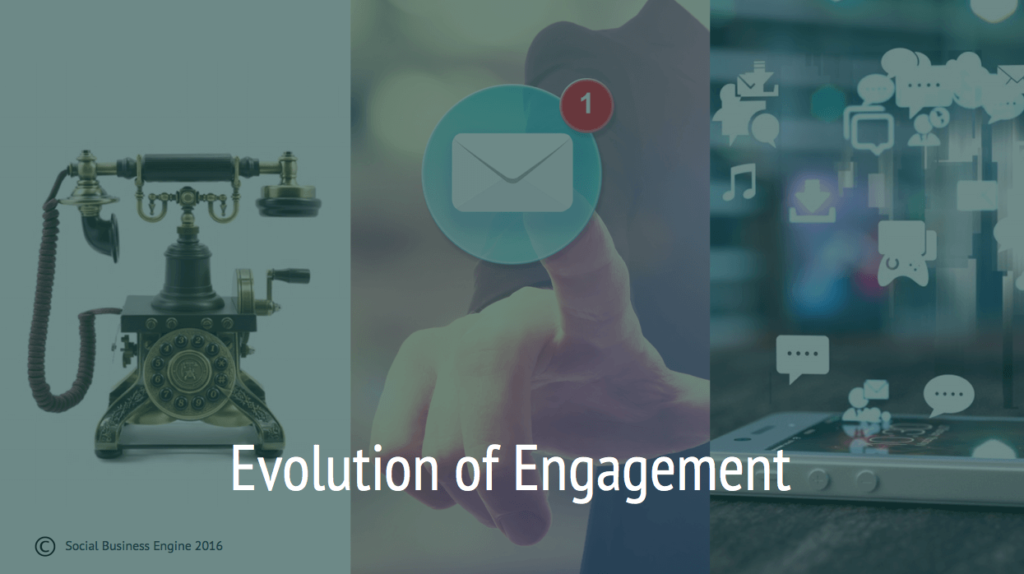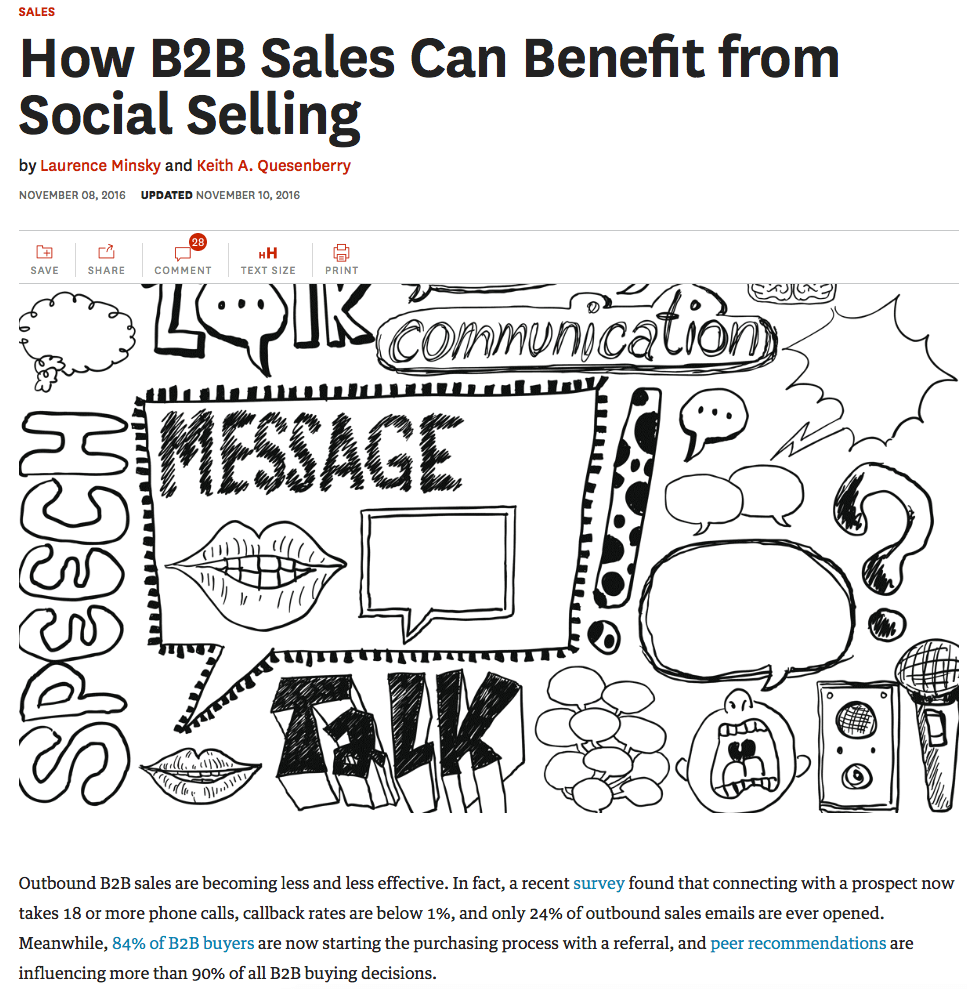I’ve been actively training and coaching B2B sales professionals on the “art and science” of social selling since 2015. I think it’s time to call out the elephant in the room that few people are talking about, I’m referring to behavior change. 82% of the world’s population is online. If you still haven’t adopted social selling in your sales strategy, now is the time for behavior change. The first step is understanding how social media is applied in sales and adopting an evolve or die mindset.
Let’s start out with the definition of social selling. Social selling is a sales concept in which sales professionals leverage the power of social communication to engage with prospects by answering their questions, providing helpful content, clarifying information, getting discovered, and creating conversation. Communication technology has evolved over the past 150 years starting with the telephone, then advancing to email, and finally to the current landscape of social media.

Behavior Change
I refer to this change in behavior as the new muscle phenomenon. When you begin working out a new muscle group, there is a weakness you are trying to overcome. You may also have to force yourself to exercise the muscle, but as you progress, it gets easier and it becomes habit. This same concept applies to social selling. It may feel strange at first to use social media in your sales strategy, but it will eventually become habit.
“If you don’t become proficient in social selling skills, you risk becoming obsolete.”@bernieborges #sbeshow![]() Tweet This
Tweet This
Social selling is a journey and a maturation process that requires building trust and relationships with your targets and those that influence them. A social selling practitioner builds trust with prospective and existing customers to create sales conversations by leveraging content, knowledge and social media channels. I don’t offer a magic time frame to suggest how long you should spend on social media each day. How much time you spend each day stems from your strategy.

This Harvard Business Review article states that “With social selling, salespeople use social media platforms to research, prospect, and network by sharing educational content and answering questions. As a result, they’re able to build relationships until prospects are ready to buy.” The article is filled with valuable statistics that support adopting a social selling mindset.
Social selling practitioners aren’t actively selling in an annoying or spammy way. They have a methodical approach. In my training, I recommend using SMART goals in social selling. A SMART goal is specific, measurable, attainable relevant, and time-bound. A quick example of one is: I’m going to get five people from my territory to attend X event in May. Start by creating SMART goals and then move on to the tactics that support them.
Social Selling Tactics
Anyone practicing B2B social selling should be using LinkedIn. It’s not just for job hunters; your profile should reveal what you can do for prospective customers. It should not read like a resume. Review your Social Selling Index on LinkedIn, and if you’re below 80, then you have room to improve.
Use social media platforms to engage with your prospects. Share interesting articles and selectively mention or tag brands or individuals with whom you would like to build a relationship. Search engines and search features on LinkedIn and Twitter can show you who you need to connect with when targeting specific brands.
Review recent activity and profile basics for an indication of how seriously the prospect uses LinkedIn. You can find others related to your prospects by looking at the “People Also Viewed” suggestions.
Twitter’s Advanced Search can help you find out who you should be speaking to at a brand. Conduct account mining by creating a list and then building relationships with selected users. Review Twitter profiles for other interests and general insight into your prospects. I generally suggest five or more digital touchpoints before asking for an off-line conversation.
Successful Social Selling Practitioners
Here on the Social Business Engine podcast, I’ve had the privilege of interviewing many successful social selling practitioners. Here are five standout episodes on the topic of social selling:
- Episode 103: Amy Heiss and Suzanne Doughty explain how Dell has trained 10,000 salespeople on social media and how their productivity is then measured by managers.
- Episode 108: Andrew Spoeth discusses how the employee advocacy program at CA Technologies is for all employees.
- Episode 119: Kirsten Boileau reveals the results SAP is seeing from training 30,000 sales professionals on social media.
- Episode 123: Through social listening, Tim Hughes uncovered a sales opportunity and later won the deal.
- Episode 127: Ian Moyse explains how he got his foot in the door by reaching out to a CIO about her interest in serving on the board of a non-profit then transitioned the conversation over to business.
I hope I’ve inspired you to understand the reality of social selling, whether you’re in sales, or marketing, an entrepreneur or whatever your situation might be. Tune in to learn more about the truth of social selling and tips to grow as a social selling practitioner.
Featured On This Episode:
- Bernie Borges on LinkedIn and Twitter
- Review your Social Selling Index on LinkedIn
- Download 8 Reasons Sales Professionals Must Use Social Media to Succeed
- Download Social Business Journal, Volume 9: What’s Working in Employee Advocacy
- Join our Social Business Engine community
- Write a review of this podcast in iTunes
- Social Business Engine on Twitter: @sbengine
- Vengreso YouTube Channel | YouTube channel
There are TWO WAYS you can listen to this podcast.
You can click the Listen Now button at the top of this page…
Or, you can listen from your mobile device’s podcast player through iTunes or Stitcher. Discover why B2B professionals are raving about our social selling online courses for sales professionals, entrepreneurs and executives.


